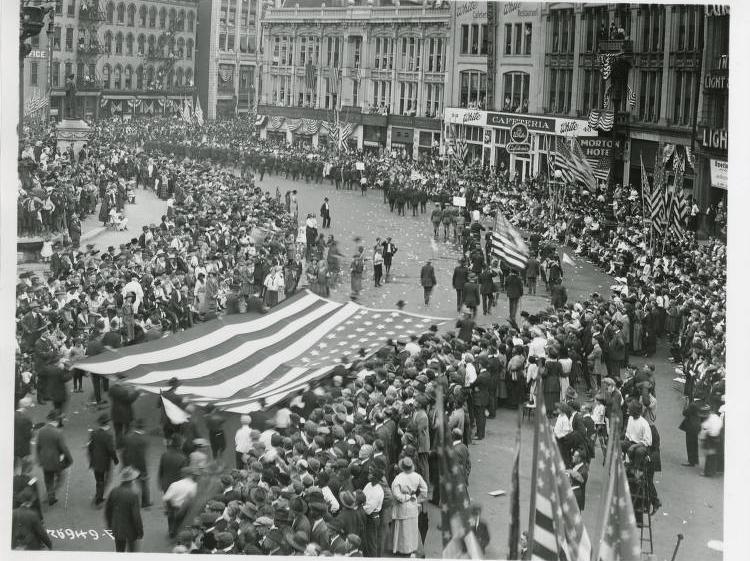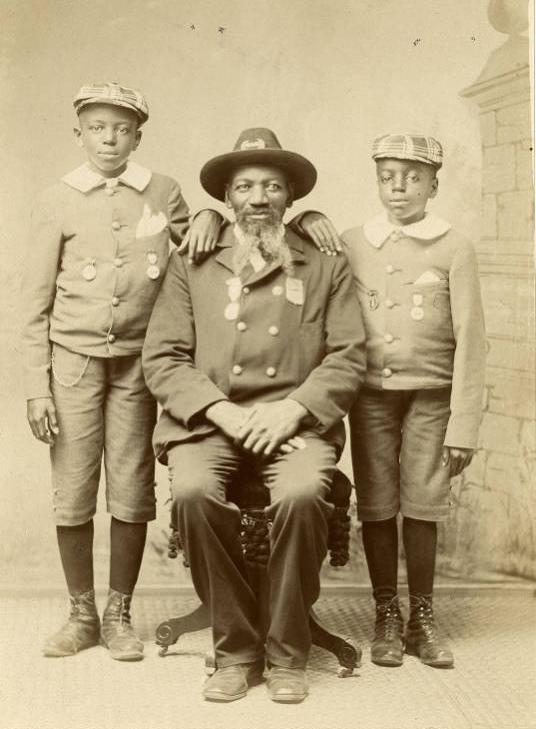The Grand Army of the Republic (GAR) was a fraternal organization of Union veterans. Dr. Benjamin F. Stephenson and General John A. Logan of Illinois founded the organization in 1866. Indiana, and especially Indianapolis, played a key role in the organization’s early history. Governor recognized the political opportunities that such an organization offered and sent representatives to visit Stephenson. With Morton’s encouragement, Indiana served as the unofficial national headquarters for several months.

Among the various state chapters within the GAR, the Department of Indiana had one of the largest membership bases. Numerous Indiana veterans such as Ivan N. Walker and Orlando A. Somers served as National Commanders of the GAR while famous Hoosiers such as and were active members. Altogether there were more than 25,000 Hoosier Civil War veterans who were members of the GAR. By 1890, the organization developed a national following and had more than 400,000 dues-paying members.
The GAR’s motto was “Fraternity, Charity, Loyalty.” Prospective members who wanted to join the organization had to have been honorably discharged from the United States military. To gain admission, members participated in a secret initiation ceremony at their local post and took an oath. During the oath, GAR members promised to remember those who had lost their lives in battle, commit themselves to help their fellow “comrades” in need of charity and promote future loyalty to the United States.

There were nearly 600 posts throughout the state of Indiana. The GAR was unique in that it was a racially integrated organization that welcomed all men regardless of “what color his skin may have been.” While most local posts in Indiana had an all-white membership, there were 45 racially integrated posts and 6 all-Black posts. The African American Martin Delany Post Number 70 of Indianapolis was a particularly active chapter that frequently gave musical performances at state and national GAR meetings.
Throughout its existence, the Indiana GAR actively lobbied to have annual national meetings—called “encampments”—held in Indianapolis. Through these efforts, the city hosted the national encampment seven times, more than any other city in the United States. Most notable among these encampments were the ones hosted in 1866 (the first meeting of the GAR) and 1893 (the largest encampment held in Indianapolis, it featured a replica of the USS Kearsarge on the grounds of the Indiana ).
In addition to providing a sense of camaraderie among Union veterans and a space to remember shared experiences during the Civil War, the GAR was politically active in a number of causes. Nationally, the organization fought for hiring preferences in job postings, better medical attention for veterans, increased pension benefits for soldiers, widows, and orphans, and funding to construct monuments and memorials commemorating Union soldiers. In Indiana, GAR members participated in their own unique causes that were helped in part by the publication of the , a GAR newspaper in Indianapolis.
When reports emerged in the 1890s that schools in Indianapolis were teaching students that the Union and Confederate causes were equally valid, Indiana GAR members inspected history textbooks throughout the state and successfully lobbied to revise the state’s history curriculum. Likewise, when the owners of the began hosting their annual 500-mile race on Memorial Day in 1911, GAR members led a campaign to protest the race as an insult to Hoosiers soldiers who died during the Civil War and a desecration of the holiday.
The Indiana GAR was largely successful in its political endeavors. President Benjamin Harrison signed a pension bill in 1890 that allowed all disabled Union veterans to apply for a monthly pension. Meanwhile, the organization secured state funds to construct monuments honoring Indiana soldiers at numerous Civil War battlefields such as Gettysburg and Vicksburg in addition to local monuments throughout the state. Subsidies for the remarkable in Indianapolis were also established in 1887 after years of fundraising and political activism by the Indiana GAR.
Less successful, however, was the effort to stop holding the on Memorial Day. Hoosier Civil War veterans managed to convince state legislators to pass a bill in 1923 banning all commercial activities on Memorial Day, including the Indianapolis 500. Governor Warren McCray, however, vetoed the bill, and the race became a Memorial Day weekend tradition.
In 1949, Indianapolis hosted the last meeting of the GAR, attended by six living GAR members between the ages of 100 and 108. When the last GAR member died in 1956, the GAR ceased to exist as an organization.

Help improve this entry
Contribute information, offer corrections, suggest images.
You can also recommend new entries related to this topic.